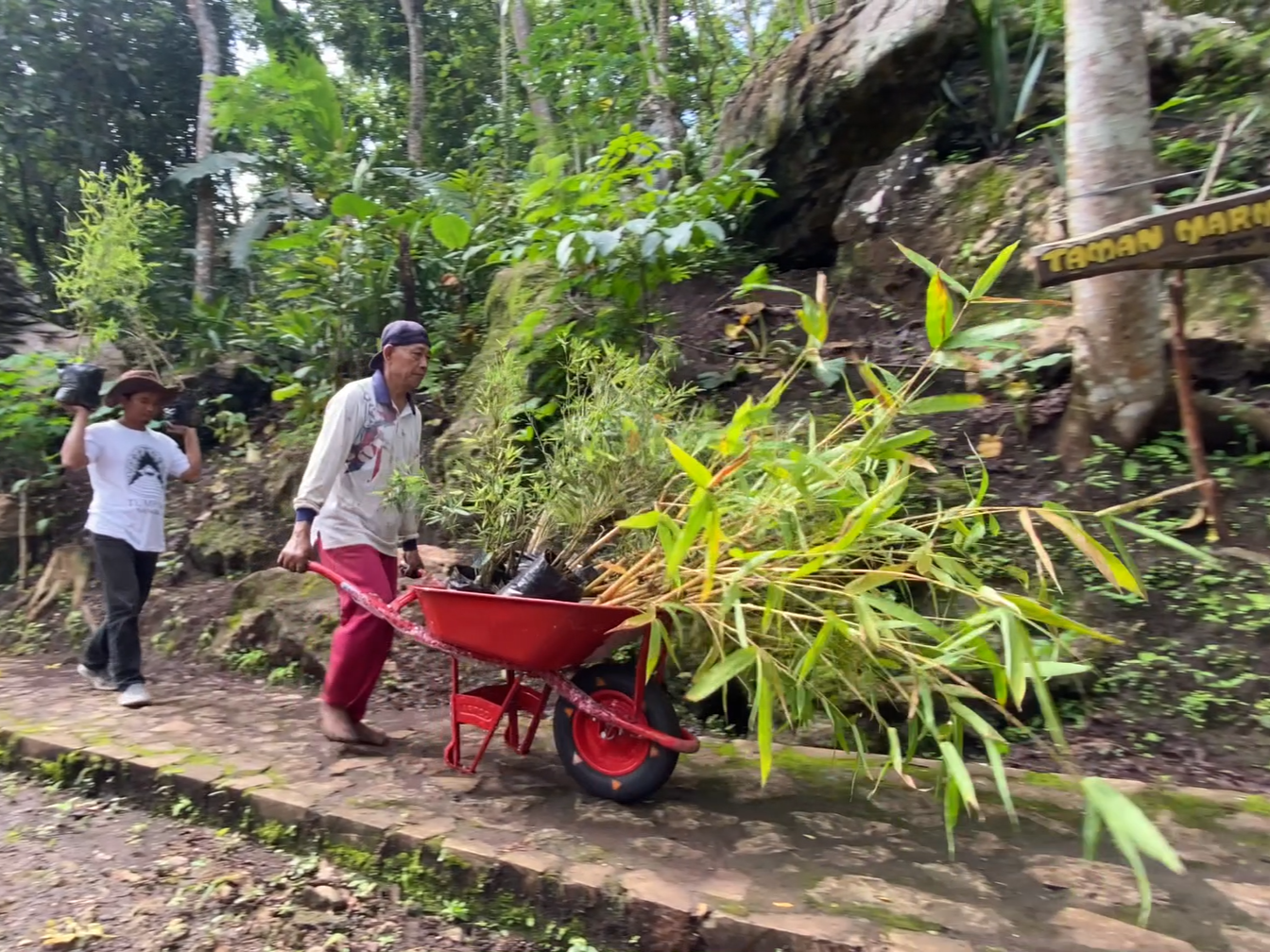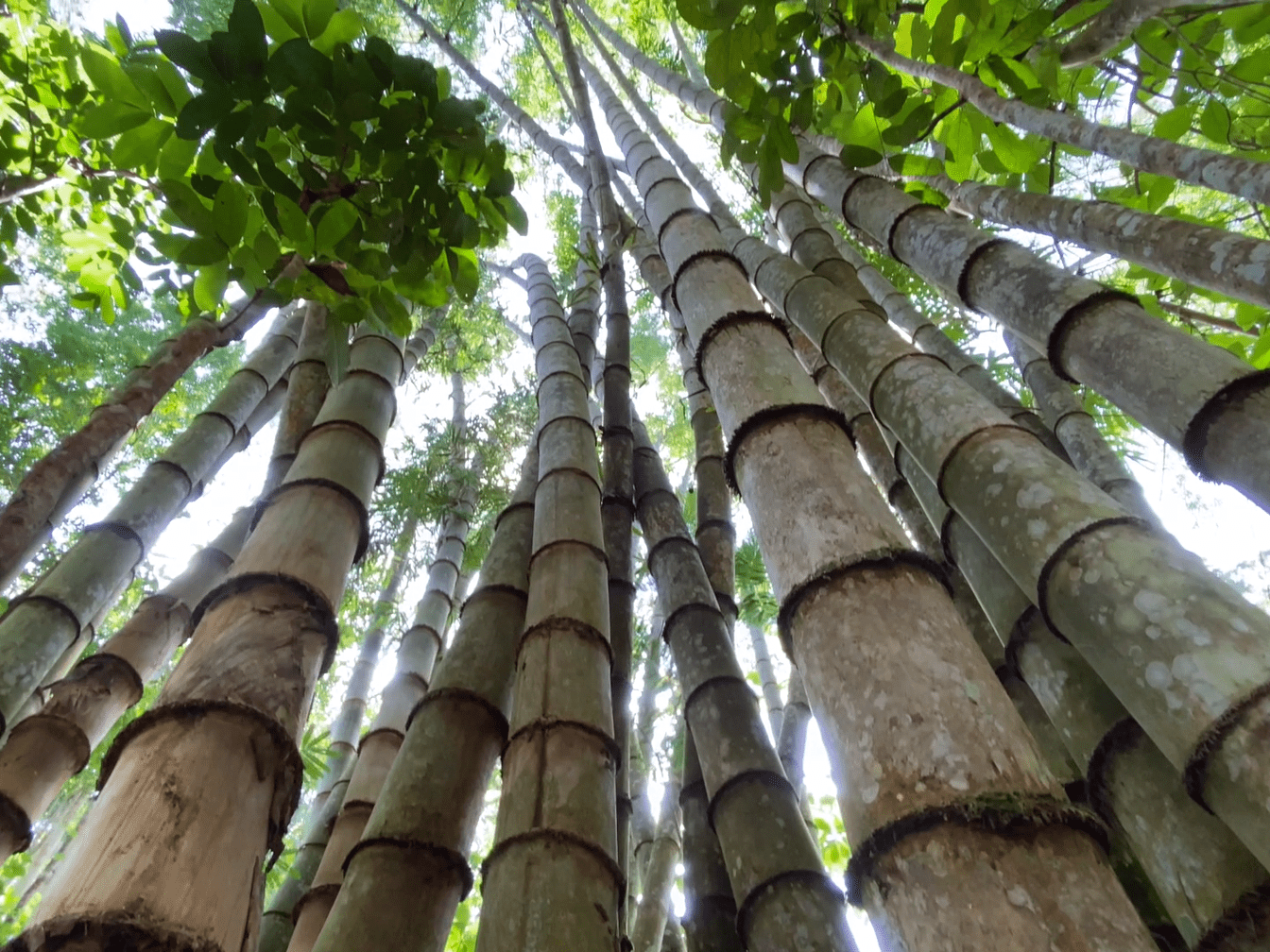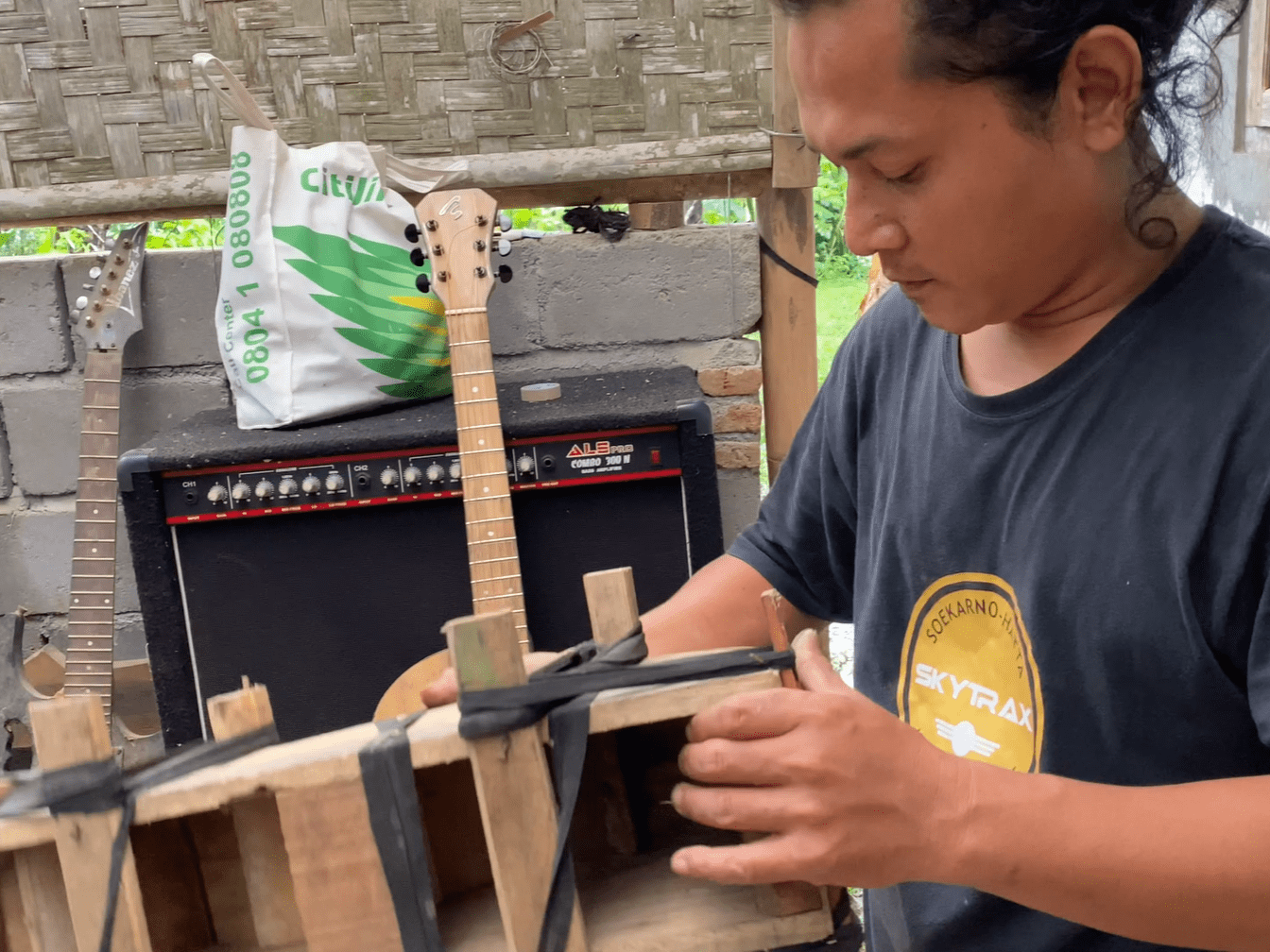Conserving Bamboo on Red Marble Hills

-
Date:
31 Jan 2023 -
Author:
KEHATI
Red marble rocks are hidden treasure found underneath Ngargoretno, a village settled on the northern slopes of Menoreh Hills in Salaman District, Magelang, Central Java. The villagers were excitedly mobilized to protect the site from being exploited.
They gathered in an open space to participate in a bamboo-planting ritual on Friday, Nov 11, 2022, accompanied by oblogowor dance performed in sync with the sounds of kenong (small gong), kendang (similar to Latino’s bongo or conga), and other indigenous percussion instruments of Javanese Gamelan.
The preparations for planting bamboo cover a 27 acre area. On the site, a total of 15,875 bamboo seedlings will be planted throughout time. Residents of Ngargoretno received bamboo seed aid from PPATK (Indonesian Financial Transaction Reports and Analysis Center/INTRAC) and FKDKP (Communication Forum for Director of Banking Compliance) in Jakarta.
Bamboo plants have been around for a while in Ngargoretno. Villagers, for many generations, have been using bamboo as building material for homes and fences only. The existence of bamboo is often ignored because they have been unable to create products with added value from it.
“We actively protect bamboo so that people don’t harm the environment. We wish to make money without causing environmental harm. We would have to evacuate the village since the hills here could collapse if the marble were to be excavated,” said Soim, a conservationist from Ngargoretno village.
Since the community has been paying less attention to bamboo plants recently, Soim and his colleagues decided to conserve it.
“Bamboo was only taken to construct homes. As bamboo is thought to have little additional value, no conservation efforts were made,” Soim said.
Actually, bamboo has several ecological benefits, like acting as a water-absorbing plant and a landslide barrier. Ngargoretno is situated on a hill that has a slightly steep slope.
Almost 3,500 people, or approximately 1,500 households, reside in this community. During the dry season, it is geographically prone to drought, while during the extensive rainy season, it is prone to landslides. Kehati Foundation encourages citizens to participate in bamboo conservation projects.
Overexploitation Without Adequate Cultivation.
Bamboo is on the verge of extinction in Indonesia due to overexploitation without adequate cultivation, and land conversion that significantly reduced the area of bamboo land.
Despite the fact that Indonesia has 60 species of bamboo from 1,200 – 1,400 species in the world, 88 of which are unique to Indonesia and are spread throughout the country; this condition disrupts the balance of the ecosystem.
Bamboo is an endemic plant in Ngargoretno, said Soim, a BUMDES (Village-Owned Enterprise) activist. Bamboo of the following species can be found there: Petung (Dendrocalamus Asper), Ori (Bambusa Blumeana), Ampel (Bambusa Vulgaris), and Wulung (Gigantochloa Atroviolacea).
“Bamboo is planted to reduce the risk of landslides, floods, and droughts,” he explained. He recalls that when he was a child, there would often be a water shortage because people would no longer cultivate bamboo or other plants that would help the land soak up rainwater.

Foto : Wawan H. Prabowo
Bamboo is useful for replanting programs in deforested areas caused by logging. Under these circumstances, bamboo serves as both an erosion barrier and an improved water catchment source, enhancing groundwater flow.
Moreover, bamboo can absorb sound and generate a lot of oxygen, making it an ideal choice for planting in residential areas. Depending on the soil conditions where it is planted, bamboo can grow 60 cm or more in a single day.
The residents of Ngargoretno village decided to grow bamboo after weighing all the advantages for environmental preservation and disaster mitigation.
A Sort of Javanese Calendar Called Pranata Mangsa.
Bamboo also has numerous economic benefits for society. Additional skills are required to increase the selling value of bamboo beyond its use as a building material.
Soim and his fellow conservationists are making various efforts to increase the economic value of bamboo, one of which is encouraging villagers to produce bamboo handicrafts.
Muklis (35), a musician from Ngargoretno village, attempts to make a guitar out of bamboo. Muklis worked on the guitar for nearly a month using only improvised tools, including shaping the curves of the guitar frame to achieve the desired resonance.

Muklis perajin bambu gitar dari desa Ngargoretno. Saat menebang bambu, Muklis menerapkan sistem pranata mangsa (Foto : Wawan H. Prabowo)
“I don’t use any chemicals to keep the bamboo I use for my guitar in good condition. When cutting bamboo, I use a local wisdom called Pranata Mangsa to ensure that it lasts naturally,” Muklis stated.
There is a sort of Javanese calendar called Pranata Mangsa that advises farmers on what to do based on the cycles of nature. Farmers have their own calendar that is geared to the seasons when they want to cultivate or harvest. The cutting season for bamboo is also affected by this.
Muklis chopped the bamboo he used in accordance with Pranata Mangsa. According to Muklis, this process extends bamboo’s natural lifespan. Pests that make bamboo fragile and produce powder will not impact bamboo sticks that have been cut down. He showed piles of bamboo sticks that had been harvested two years earlier still in perfect condition.
Muklis and Soim dreamed of the day when Ngargoretno bamboo crafts would be extensively distributed in the Borobudur tourism region. As a result of its widespread use in the building of fences, home walls, and ceiling panels, Ngargoretno’s native bamboo generates considerable economic benefits. Ngargoretno also offers a variety of other bamboo products, such as traditional musical instruments, bamboo shoots, chopsticks, skewers, toothpicks, gazebos, fishing equipment, and various home furnishings.
(Authors: Armunanto/Lusiana Indriasari/KEHATI Team).
